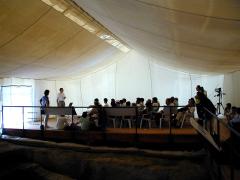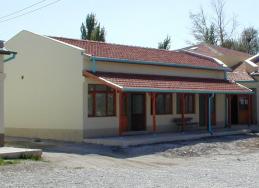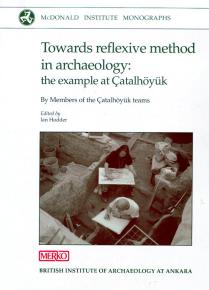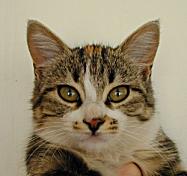Introduction
This year was the first of two study seasons for the Cambridge team, no excavation took place in the North and South Areas as team members concentrated on post-excavation analysis of material and records collected since excavations in these areas began in 1995. This work is in preparation for the publication of these areas in three volumes planned for 2002. Craig Cessford, supervisor of the North Area conducted his work in Cambridge, and Shahina Farid, supervisor of the South Area and Site Director, worked at the site and in Cambridge. Many specialists worked in the site laboratories and in the Konya Archaeological Museum, totally engrossed in the recording and analysing of the material excavated since 1995.
However, excavations continued in the BACH1 Area and on the West Mound. Additional work was also carried out on the surface of the East Mound in order to identify a new area for excavation by a Polish Team from Poznan University (Poland), who will be joining us in the summer of 2001 (see Figure 6)
A delayed start to the season resulted in the necessity to extend the summer season through to mid-November, to give some specialists the chance to catch up on the time lost earlier.
For the first time since 1996, we were also joined by a new team of geophysical surveyors, keen to survey within the buildings and vertically through the walls in an attempt to identify details such as burials and bricks, as well as new areas of the mound.
The external structure of the experimental reconstruction house, begun in 1999, was completed this year under the direction of Mirjana Stevanovic. The house structure (with a conventional door as well as a rooftop entrance, in concession to visitor access) is finished, and it is planned to finalise the internal arrangement next summer, so that the house can be made accessible to visitors.
We were very grateful to receive the visit of İstemihan Talay, the Minister of Culture. His knowledge of and interest in the site were very apparent and he gave much encouragement to the team and the project. We also had an extended visit by the Turkish History Foundation (Türk Tarih Vakfı), which took the form of a day long seminar. The seminar was held in the tent shelter erected last year over Building 5 in the North Area, the structure proved very well suited for such an event (Figure 2). |
 Figure 2: Seminar in B5 Shelter |
For the Çumra Agricultural Festival in September the project took part in and gave papers at 1.Uluslar Arası Çatalhöyük'den Günümüze Çumra Kongresi (First International Cumra Congress: From Çatalhöyük to the Present)
 Figure 3: The new laboatories |
A large part of the field season was spent sharing the site with construction workers: two more laboratories were completed in September, funded by sponsorship. These new buildings will be used as faunal and conservation laboratories (Figure 3). Building work for the seminar room/library began in November. This building will be large enough to house the main digging teams, as well as being used for lecturing and seminars. |
Konya Archaeological Museum is redeveloping its displays, a complete new case is planned for the West Mound finds which were conserved for display this summer. Additional display panels and the cleaning of existing cases are also planned. We are very excited to see our finds on display so quickly.
In Konya Zeynep Beykont began developing links with education institutions and schools. She has been developing ideas for new curricula with the schools, and planning ways in which schoolteachers can use the site more frequently and fully.
 Figure 4: Cover, Towards Reflexive Method in Archaeology published in 2000 |
Back in the UK, the second volume in the series of Çatalhöyük Monographs was published (Figure 4 ) Hodder, I (ed) (2000) |
Next years season is already being organised. During the first half of the summer four areas will be under excavation; BACH1, Summit, West Mound and a new area called TP1 at the crest of the East Mound. The second half of the season will be devoted to a second study season in preparation for the forthcoming publications.
This year we also began discussing in earnest the need for permanent shelters over the excavation areas. A number of architects were approached for proposals on how to span large areas, but set within certain restrictions and conditions posed by the site. The shelters would need to be large and adaptable to enable continued excavation in all direction as well as in depth, withstand snow loads, rainfall, windlift and heat, maintain a stable air circulation and overall be a non-intrusive structure without foundations that would otherwise damage the archaeology. They would also need to be sympathetic to the view of the site. Various ingenious solutions were proposed, and at the time of writing we are still trying to decide in which direction we should go. All our deliberations are done in collaboration with the Director General of Monuments and Museums and the directors of the Koruma Kurulu in Ankara and Konya.
We again had a busy year with visits from journalists and TV crews. In August Michael Balter from Science Magazine came to research an article for the Chalcolithic West Mound excavation, having published two articles on the Neolithic East Mound. He also began working on an independent project of documenting the site, discoveries and team members. Eva Lindgren came in September for 3 days and has published a story in the Swedish Newspaper Dagens Nyheter . This year TV/film crew visits were from TRT (Turkish Radio and Television) and a local independent film crew who made footage periodically through the season. There are proposals for a Dutch film crew to join us in 2001 and we are also expecting a visit from National Geographic Magazine.
Two programmes made in 1999 were aired in the UK in early 2000. These were Secrets of the Stone Age (C4/Granada) and Road to Riches (BBC).
Finally, we are pleased to announce the academic successes of some of the Turkish Students associated with the Project. The project has been keen to support, both in guidance and financially, students interested in various aspects of study related to Çatalhöyük. In 2000 the project has given financial support to a number of students.
After an initial 6 months of introductory courses in faunal analysis at University College London (UCL) Banu Aydinoğlugil is now studying full time for her M.A. at UCL. Adnan Baysal is currently in the second year of his Ph.D. at UCL, analysing the ground stones from Çatalhöyük. Başak Boz has begun a Ph.D. at Haccetepe University, Ankara, pursuing further analysis of the human teeth from Çatalhöyük. Serap Özdol of Ege University, Izmir is in the third year of a PhD in pottery analysis. With support from the Project she is spending a 6 month study period at Adana University, learning the process of thin section analysis. And Nurcan Yalman of Istanbul University is currently attending courses and lectures at UCL for a 3-6 month period, studying ethnoarchaeology, archaeological theory and related subjects.
Other successes include Aylan Erkal who, spent three months on study visit to Kew Gardens, Cambridge and Canterbury with support from the British Council and the Çatalhöyük Research Project. She then gained a scholarship from the University of California at Berkeley to study for a Ph.D. in Archaeobotany there. Burcu Tung is now studying for an M.Phil. in Archaeology at Cambridge University, supported by a Cambridge Overseas Trust Bursary.
Finally, the Project also provided financial support to enable Banu Oksuz and Ahmet Ayhan, two students from Istanbul University, to come to the UK to study English.
In order to continue such support the Çatalhöyük Research Project has established a formal Çatalhöyük Scholarship Fund to which Turkish students may apply (awards are made by panel decision). Interested candidates should request an application form from the Project Office in Cambridge (see address). The deadline for 2001 (academic year 2001/2002) is the 31st of April 2001. |
 Figure 5: Çatal the cat |
Finally it may be of interest to some of you, in particular 2000 team members, to know the destiny of this years project adopted kitten. She arrived at the site in August from the local village of Küçükköy and in November was adopted by Anne Marie Vandendriessche and has emigrated from Turkey. After a lengthy process of procuring the correct official paperwork for the now almost fully grown cat she was finally christened Çatal (what else!). She is currently in Paris but en-route to take up permanent residence in a vineyard in the Napa Valley, California. |